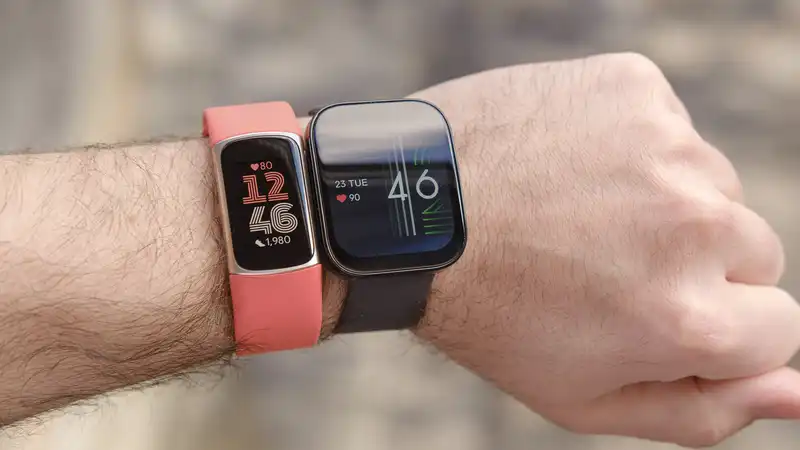The Fitbit Charge 6 is one of the best Fitbit trackers on the market, thanks to its built-in GPS, bright screen, and excellent set of tracking indicators. However, at $159, it is not a bargain; the Amazfit Bip 5 has the same features and specs as the Charge, but retails for about $85.
Price aside, what do these two fitness trackers have to offer? In terms of fitness and health, both the Fitbit Charge 6 and Amazfit Bip 5 monitor heart rate, blood oxygen saturation (SpO2), stress levels, and sleep quality. Similarly, each device has GPS for accurate distance tracking without a cell phone; the Charge has over 40 different tracking modes and the Bip has over 120.
Both devices also offer convenient smartwatch-like features such as mobile payments, text and call notifications, and music control for connected devices.
The Bip has a larger (LCD) screen than the Charge, but is more chunky and slightly less luxurious. In contrast, the Charge's smaller AMOLED is much brighter and easier to see in daylight. [Aside from these differences, when it comes to walking and running, both trackers provide basic information such as step count, distance, average heart rate, maximum heart rate, and pace.
The Bip 5 recently lost the ongoing step count battle of fitness trackers, with the Polar Vantage V3 recording a W against it. But before that, the Bip 5 won against the Fitbit Inspire 3. Will the Bip 5 upset another Fitbit model? Read more
I started my evening walk with the Fitbit Charge 6 on one wrist and the Amazfit Bip 5 on the other. As an additional data point, Strava was run from the phone in walk tracking mode.
With no particular destination in mind, I bounced to my feet, smiled at the fact that the Pacific Northwest rain had finally lifted, and took on a brisk January evening with an embarrassment of many high-tech devices. The results are as follows.
Both fitness tracking devices were within 50 steps of my actual step count. However, the Fitbit Charge 6 was only two steps off, making the Fitbit Charge 6 the winner. It was also the closest any tracker I tested came to an accurate total number of steps.
In addition to steps, there are notable differences in distance, calories, heart rate, and pace; the Fitbit recorded a higher heart rate and calories burned, but ran shorter distances.
Don't let these discrepancies frustrate you. No fitness tracker is perfect. The key is to pick one and keep using it. Furthermore, it is important not to get too fixated on one data point when setting and measuring fitness goals.
For what it's worth, neither device measured my total elevation gain while walking. Living in a hilly city like Seattle, this data point is more than useful. Fortunately, Strava had me covered - I climbed 236 feet during my short, brisk walk.
The showdown was also super close, but in the end the Fitbit Charge 6 proved to be more accurate in counting steps than the Amazfit Bip 5. Still, both devices are more than accurate enough to maintain or jump-start fitness goals.










Comments